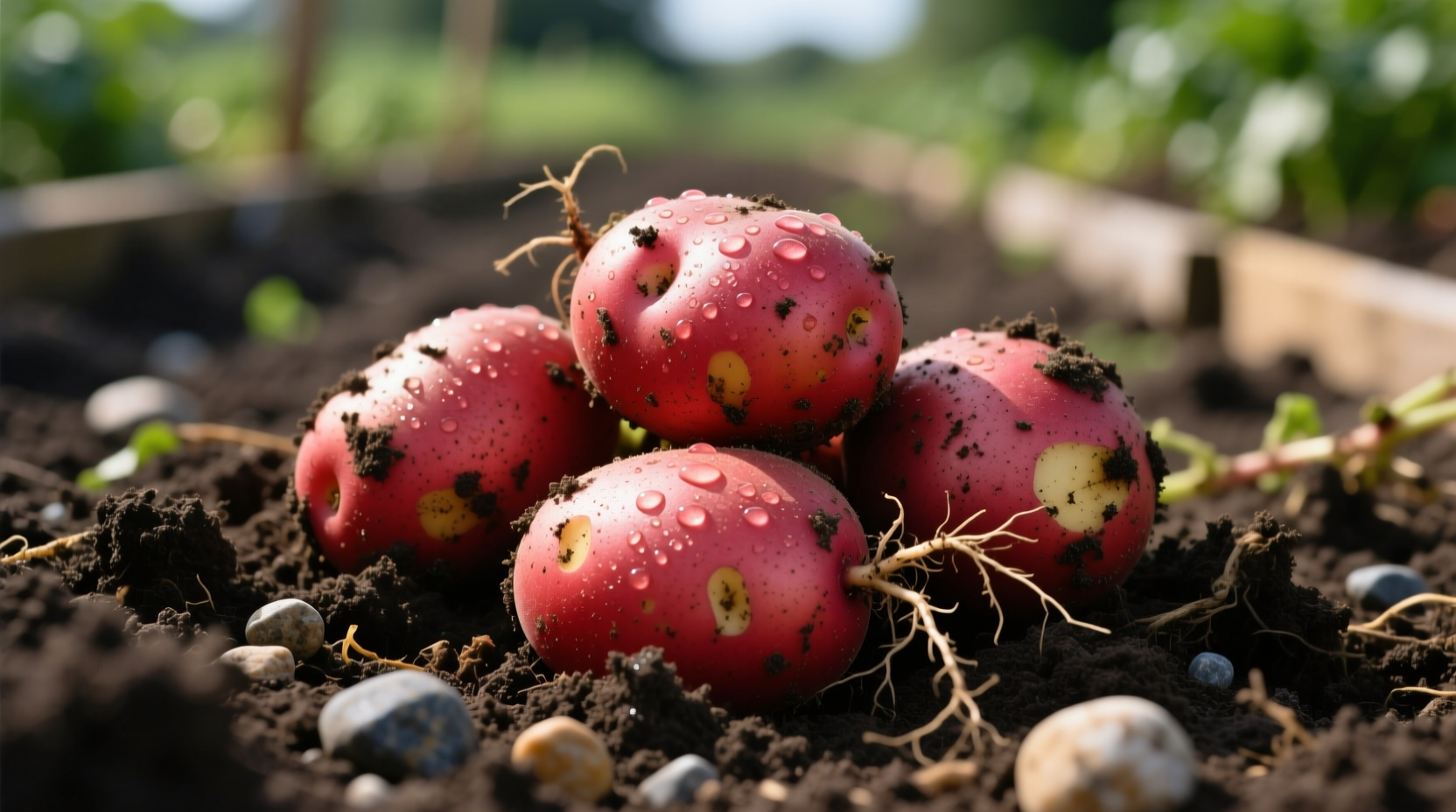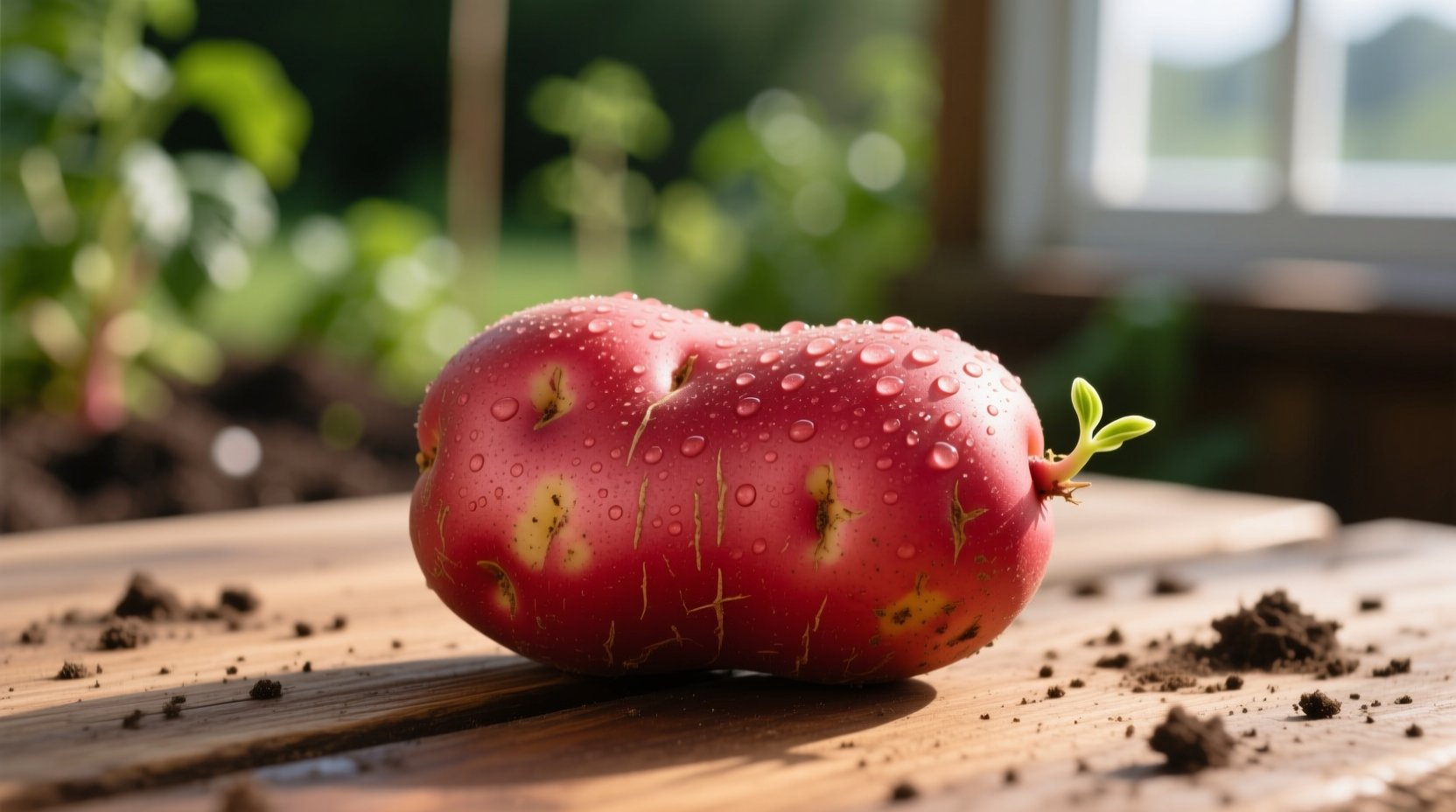Red Norland potatoes are early-season, smooth-skinned red potatoes prized for their vibrant color, moist texture, and versatility in cooking. They're ideal for boiling, roasting, and salads due to their firm texture that holds shape well. Unlike many potato varieties, Red Norlands have thin skins that don't require peeling, making them perfect for dishes where appearance matters. These potatoes reach maturity in just 70-90 days, providing gardeners with an early harvest option compared to maincrop varieties.
Discover why home gardeners and professional chefs consistently choose Red Norland potatoes for their reliable performance and distinctive culinary qualities. This comprehensive guide covers everything you need to know about growing, storing, and cooking with this popular potato variety.
What Makes Red Norland Potatoes Special
Red Norland potatoes (Solanum tuberosum 'Norland') stand out in the potato family with their distinctive bright red skin and white to pale yellow flesh. Developed in the 1950s at the University of Wisconsin and officially released in 1967, this variety quickly gained popularity for its early maturity and consistent performance across various growing conditions.
Unlike many potato varieties that develop thicker skins as they mature, Red Norlands maintain their characteristic thin, smooth skin throughout their growth cycle. This feature makes them particularly valuable for culinary applications where presentation matters. Their flesh remains moist and waxy rather than fluffy, which explains why they excel in dishes that require potatoes to maintain their shape after cooking.

Historical Development Timeline
Understanding the evolution of Red Norland potatoes provides context for their current popularity:
| Year | Development Milestone |
|---|---|
| 1950s | Initial cross-breeding at the University of Wisconsin Agricultural Experiment Station |
| 1961 | First field testing of promising selections |
| 1967 | Official release as 'Norland' potato variety |
| 1970s | Widespread adoption by commercial growers across North America |
| 1980s | Introduction of the improved 'Red Norland' strain with enhanced disease resistance |
| Present | One of the most popular early-season red potato varieties in home gardens and commercial production |
Physical Characteristics and Identification
Red Norland potatoes have several distinctive features that make them easy to identify:
- Skin color: Bright, uniform red that covers the entire tuber
- Skin texture: Smooth and relatively thin compared to many other varieties
- Shape: Typically oval to oblong with shallow eyes
- Flesh color: White to pale yellow, sometimes with a slight pink tinge near the skin
- Size: Medium, usually 2-3 inches in diameter when mature
- Texture: Moist and waxy rather than dry and fluffy
These potatoes are often confused with other red varieties like Red Pontiac, but Red Norlands typically have a brighter red color and smoother skin texture. The eyes are shallower, making them easier to clean and prepare.
Growing Red Norland Potatoes Successfully
For gardeners interested in cultivating Red Norland potatoes, understanding their specific requirements is essential for a successful harvest:
Planting Requirements
Red Norlands thrive in cool climates and are considered an early-season variety, typically ready for harvest 70-90 days after planting. They perform best when planted in early spring as soon as the soil can be worked, usually when soil temperatures reach 45-50°F (7-10°C).
Key planting considerations:
- Soil: Well-drained, loose soil with pH between 5.0-6.5
- Spacing: Plant seed pieces 12-15 inches apart in rows 24-36 inches apart
- Depth: Plant 3-4 inches deep initially, with additional soil mounded around plants as they grow
- Sunlight: Full sun (at least 6-8 hours daily)
Water and Nutrient Needs
Consistent moisture is critical during tuber formation (approximately 3-6 weeks after planting). Red Norlands require about 1-2 inches of water per week, with increased watering during hot, dry periods. However, avoid overwatering as this can lead to rot and disease problems.
For optimal growth, apply a balanced fertilizer at planting time and again when plants reach 6-8 inches tall. Avoid high-nitrogen fertilizers later in the season, as this can promote excessive foliage growth at the expense of tuber development.
Common Pests and Diseases
While Red Norlands have good resistance to several common potato diseases, they remain vulnerable to:
- Potato scab (manage with proper soil pH and crop rotation)
- Early and late blight (prevented with proper spacing and watering practices)
- Colorado potato beetles (controlled with row covers or organic pesticides)
According to the University of Minnesota Extension, implementing a 3-4 year crop rotation cycle significantly reduces disease pressure in potato beds (extension.umn.edu/plant-diseases).
Culinary Applications and Best Practices
Red Norland potatoes shine in culinary applications where their distinctive characteristics provide advantages over other varieties:
Ideal Cooking Methods
Due to their moist, waxy texture, Red Norlands excel in:
- Boiling: Maintain shape well for potato salads
- Steaming: Preserves texture and color
- Roasting: Develops a beautiful caramelized exterior while staying tender inside
- Grilling: Holds together well on the grill
- Stewing: Maintains integrity in soups and stews
They're less suitable for dishes requiring fluffy texture like mashed potatoes (where Russets excel) or French fries (where high-starch varieties perform better).
| Potato Variety | Best For | Not Recommended For | Starch Content |
|---|---|---|---|
| Red Norland | Salads, roasting, boiling, grilling | Mashed potatoes, French fries | Low (14-16%) |
| Russet | Mashed potatoes, baking, French fries | Salads, boiling | High (20-22%) |
| Yukon Gold | Mashed potatoes, soups, roasting | Salads requiring firm texture | Medium (17-19%) |
| Fingerling | Roasting, grilling, salads | Mashed potatoes | Low-Medium (15-17%) |
Harvesting for Optimal Flavor
Red Norlands can be harvested at different stages for varying culinary experiences:
- New potatoes: Harvest 7-8 weeks after planting when plants begin flowering for tender, thin-skinned potatoes with delicate flavor
- Maincrop: Harvest 90-100 days after planting when vines yellow and die back for fully mature potatoes with thicker skins suitable for storage
For the best flavor, allow potatoes to cure in a cool, dark place for 2-3 weeks after harvest before storing long-term. This curing process helps develop their characteristic sweet, earthy flavor.
Storage Recommendations for Maximum Freshness
Proper storage extends the shelf life of Red Norland potatoes while maintaining their quality:
- Store in a cool, dark place between 45-50°F (7-10°C)
- Maintain humidity around 90-95% to prevent shriveling
- Use ventilated containers like paper bags or wooden crates
- Avoid storing near onions, which release gases that accelerate sprouting
- Do not refrigerate, as cold temperatures convert starch to sugar
Unlike Russet potatoes that can store for 6-8 months under ideal conditions, Red Norlands have a shorter storage life of 2-3 months due to their thinner skins. Check stored potatoes regularly and remove any showing signs of spoilage to prevent spread to other tubers.
Common Questions About Red Norland Potatoes
When is the best time to plant Red Norland potatoes?
Plant Red Norland potatoes 2-4 weeks before your last expected spring frost date when soil temperatures reach 45-50°F (7-10°C). In most regions, this falls between late March and early May. These early-season potatoes thrive in cool soil conditions and mature quickly, typically ready for harvest 70-90 days after planting.
Can Red Norland potatoes be grown in containers?
Yes, Red Norland potatoes grow well in containers. Use a container at least 15-20 gallons in size with good drainage. Start with 4-6 inches of potting mix, plant 2-3 seed potatoes, and continue adding soil as the plants grow. Container-grown potatoes require more frequent watering than garden-grown ones, especially during tuber formation. Harvest when the plants begin to yellow and die back.
Why do my Red Norland potatoes have green spots?
Green spots develop when potatoes are exposed to light, causing chlorophyll production and accumulation of solanine, a naturally occurring compound that can be toxic in large quantities. While small green spots can be safely cut away, potatoes with extensive greening should be discarded. To prevent this, ensure proper hilling during growth and store harvested potatoes in complete darkness.
How do I know when Red Norland potatoes are ready to harvest?
Red Norlands are ready for harvest when the plants begin to yellow and die back, typically 70-90 days after planting. For new potatoes, harvest when plants start flowering (about 7-8 weeks after planting). Mature potatoes will have thicker skins that don't rub off easily when gently handled. The best indicator is checking a test potato by carefully digging around one plant to assess size and skin set.
Can I save Red Norland potatoes for planting next year?
While possible, it's generally not recommended to save your own seed potatoes. Commercially produced seed potatoes are certified disease-free, whereas home-saved potatoes may carry diseases that accumulate over generations. If you do save your own, select only the healthiest, disease-free tubers from an early harvest, store them properly over winter, and be prepared for potentially reduced yields and increased disease risk.











 浙公网安备
33010002000092号
浙公网安备
33010002000092号 浙B2-20120091-4
浙B2-20120091-4